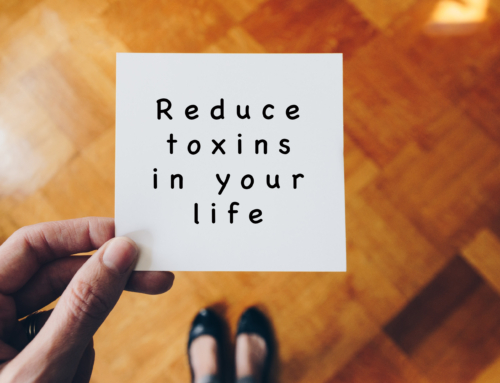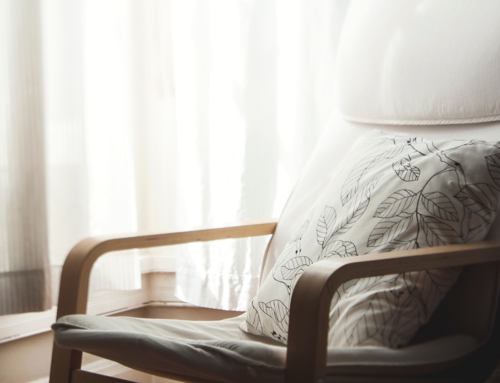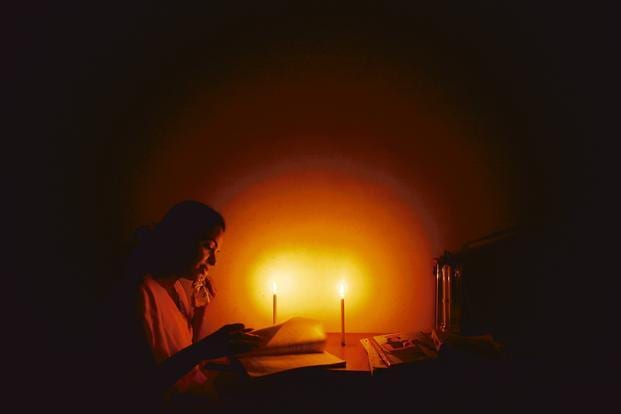
Times have changed. Up until the advent of electrical and other types of artificial lighting, people mostly engaged in activity during daylight hours. Hours of wakefulness after dark were relatively short and spent in ways conducive with winding down and preparing to sleep. Light exposure after sundown consisted of the glow of amber hues from candles, oil lamps, and campfires.
This life pattern was compatible with the body’s natural sleep/wake 24- hour cycle known as circadian rhythm. Our bodies were designed so that light and darkness act as signals to regulate the proper balance between times of wakefulness and rest. Daylight’s bright blue-light wavelengths from the sun let the body know it is time to be awake and alert whereas darkness cues it to release the hormone melatonin that helps us begin to feel ready for sleep.

In today’s world, we are surrounded by the brightness of man-made blue-light wavelengths at all times of the day and night due to artificial lighting (particularly LED and fluorescent lights in addition to incandescent and halogen) as well as from the screens of TV’s, computers, smartphones, and other electronic devices.
Blue light is the part of the visible light spectrum with the shortest wavelengths and highest energy. Its wavelengths are detected by specialized photosensitive receptors in the retina of the eye that then transmit information to cells within our internal master clock (known as the SCN – Suprachiasmatic Nucleus) located in the hypothalamus area of the brain. This not only determines the light-dark cycle of a 24 hour period but also affects various rhythms and functions of the body as “clocks” within the body’s cells synchronize with the master clock.
When it is dark, stimulation from these forms of blue lightwaves that normally only occur during the brightest hours of the day can throw off our body’s internal clock and upset the natural rhythm that triggers sound sleep, waking, hunger, hormone secretion, cellular function, and gene expression. Particularly disruptive to sleep quality is the fact that activating this area of the brain with blue lightwaves prevents the pineal gland from producing melatonin, a hormone that induces drowsiness and promotes natural sleep cycles. Artificial blue light basically tricks your body into thinking it is daytime when it is actually night.
Blue Light Effects on Melatonin Production and Sleep Quality
Blue light wavelengths disturb natural sleep patterns and result in poor sleep quality due to the suppression of melatonin levels that should normally rise after dark and reach peak in the middle of the night when REM sleep typically begins. Experiments conducted by Harvard researchers that compared blue light exposure to green light of similar brightness concluded that blue light suppressed melatonin and shifted circadian rhythms twice as much. Even the American Medical Association recognized in 2016 that streetlights with blue-light rich LED lights significantly suppressed melatonin at night and impacted circadian sleep rhythms five times more than conventional street lamps.
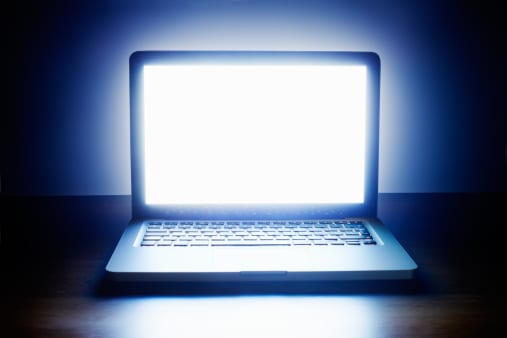 Intense blue light from TVs, smartphones, and computers have been shown to inhibit melatonin production in the brain up to 80 percent. Sleeping with a light on can decrease melatonin levels by as much as 85 percent. A study published by the Journal of Clinical Endocrinology and Metabolism revealed that exposure to room light before bedtime resulted in delayed release of melatonin in 99 percent of study participants and reduced the duration of melatonin release by about 90 minutes.
Intense blue light from TVs, smartphones, and computers have been shown to inhibit melatonin production in the brain up to 80 percent. Sleeping with a light on can decrease melatonin levels by as much as 85 percent. A study published by the Journal of Clinical Endocrinology and Metabolism revealed that exposure to room light before bedtime resulted in delayed release of melatonin in 99 percent of study participants and reduced the duration of melatonin release by about 90 minutes.
Melatonin is not only important for helping to induce deep quality sleep but is also a powerful antioxidant hormone that works during the night to remove the effects of free radicals that can cause cellular and DNA damage and, ultimately, disease. It is also essential to the regulation of the energy powerhouses of our cells (mitochondria) and helps prevents oxidative stress that leads to mitochondrial dysfunction.
Health Effects Associated with Nighttime Blue Light Exposure
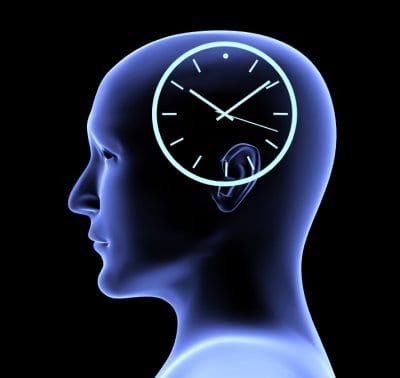 Sleep is not the only thing to suffer when our internal biological clock is thrown out of sync. According to Dr. Joseph Mercola, “exposure to artificial light at the wrong times of day is one of the largest often-overlooked health risks of living in the 21st century.” A 2016 study published in Current Biology revealed that mice exposed to continuous artificial light for five months experienced ill effects on their health that included inflammatory activation of the immune system, muscle loss and signs of osteoporosis. Within a period of two weeks after restoring their natural light-dark cycle, the mice rapidly returned to normal function. Researchers concluded that disrupted circadian rhythm can trigger detrimental (howbeit reversible) effects on multiple biological processes.
Sleep is not the only thing to suffer when our internal biological clock is thrown out of sync. According to Dr. Joseph Mercola, “exposure to artificial light at the wrong times of day is one of the largest often-overlooked health risks of living in the 21st century.” A 2016 study published in Current Biology revealed that mice exposed to continuous artificial light for five months experienced ill effects on their health that included inflammatory activation of the immune system, muscle loss and signs of osteoporosis. Within a period of two weeks after restoring their natural light-dark cycle, the mice rapidly returned to normal function. Researchers concluded that disrupted circadian rhythm can trigger detrimental (howbeit reversible) effects on multiple biological processes.
Chronic Diseases – a number of studies suggest a link between too much exposure to light at night (such as with nightshift workers) and greater incidents of heart disease, diabetes, obesity, and certain types of cancer. In 2007, the World Health Organization classified shift work as a ‘probable carcinogen’ after various studies substantiated the fact that light at night increased the risk of breast cancer. A clear association between reduced melatonin and a variety of cancers has been observed in studies as well.
Metabolic Health – an individual’s metabolic health along with their risk of becoming obese and/or developing Type 2 diabetes is also linked with the body’s internal master clock impacted by disturbances in circadian rhythm. Lower melatonin levels are independently associated in studies with the risk of developing type 2 diabetes. Participants in a Harvard Medical School study who were placed on a different schedule that shifted their circadian rhythm experienced increases in blood sugar that put them into a prediabetic state. At the same time, their leptin levels decreased (leptin is a hormone that lets the body know it is full after a meal is consumed). It is known that fat burning increases during the dark phase of our body’s biological clock and light detection shifts the body out of fat-burning mode into a sugar-burning state. Consequently, too much blue light exposure that disrupts circadian rhythm results in a greater tendency to put on pounds.
Mood and Psychological Disorders – disturbances in sleep due to inhibition of melatonin production and out of sync circadian rhythm cycles from blue light exposure play a significant role in the onset and continuation of mood disorders such as depression, bipolar disorder, generalized anxiety, and post-traumatic stress disorder. Studies repeatedly show that people who do shift work are more likely to suffer depressive episodes with a risk of major depression if shift work continues over a period of many years.
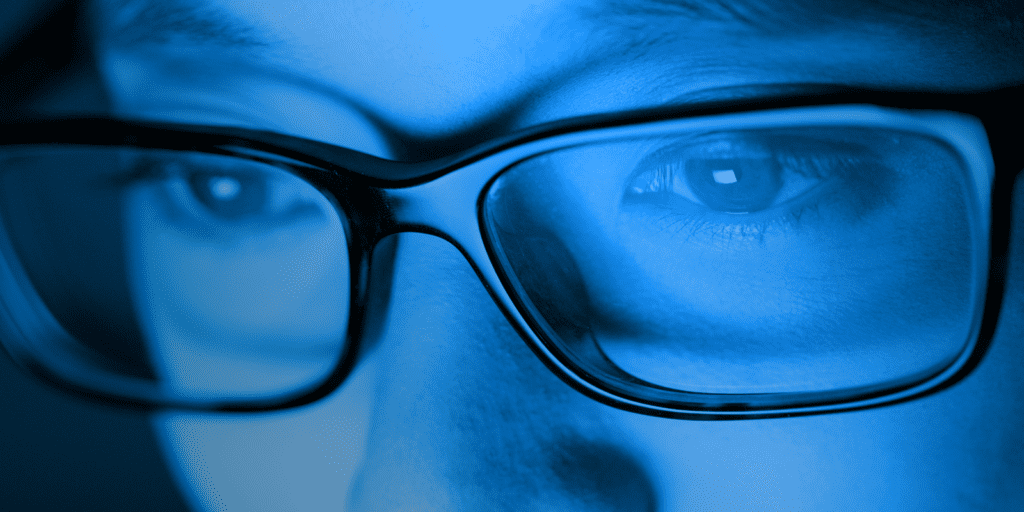 Eye Health – blue light is also detrimental to eye health and increases the risk of macular degeneration. Since virtually all blue light rays pass through the cornea and lens and reach the retina, damage can easily occur to light-sensitive cells in the retina that can lead to permanent vision loss. Digital eye strain results from looking too much at screens with blue light. The reason is that it becomes more difficult to focus due to the fact that short-wavelength, high energy blue light scatters more than other light wavelengths.
Eye Health – blue light is also detrimental to eye health and increases the risk of macular degeneration. Since virtually all blue light rays pass through the cornea and lens and reach the retina, damage can easily occur to light-sensitive cells in the retina that can lead to permanent vision loss. Digital eye strain results from looking too much at screens with blue light. The reason is that it becomes more difficult to focus due to the fact that short-wavelength, high energy blue light scatters more than other light wavelengths.
Ways to Protect Yourself from Blue Light after Dark
There are a variety of ways you can reprogram your body’s inner clock to distinguish between evening as a time for sleep and daytime as a time to be awake and energetic. To experience better sleep and protect your health at the same time, consider implementing the following recommendations:
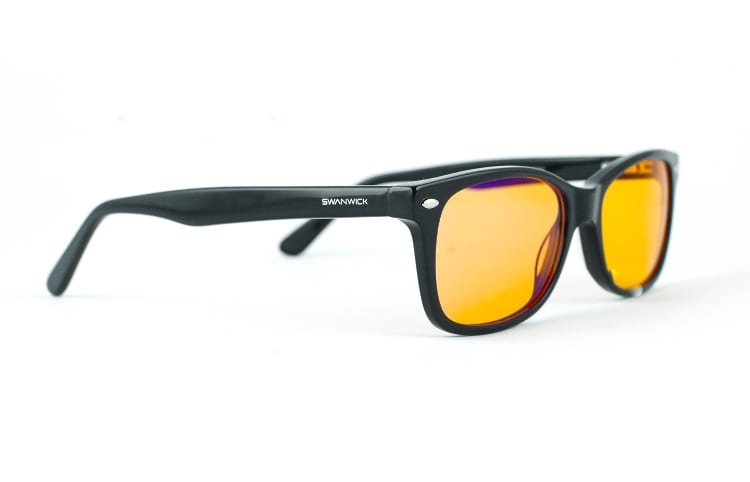 Blue light-blocking glasses – a simple and relatively inexpensive way to block blue light when exposed to artificial light at night is to use orange/amber tinted blue-light-blocking glasses which you can easily find on Amazon. Not only will these glasses filter out blue light but they also prevent damage to DHA (an essential fatty acid) within the lining of retinal cells that convert sunlight into important electrical impulses sent to the brain. In studies conducted with nightshift workers at high risk for disorders associated with circadian rhythm disturbances, those who used blue-light-blocking glasses during the latter part of their shift for a period of weeks experienced overall increased sleep and sleep quality.
Blue light-blocking glasses – a simple and relatively inexpensive way to block blue light when exposed to artificial light at night is to use orange/amber tinted blue-light-blocking glasses which you can easily find on Amazon. Not only will these glasses filter out blue light but they also prevent damage to DHA (an essential fatty acid) within the lining of retinal cells that convert sunlight into important electrical impulses sent to the brain. In studies conducted with nightshift workers at high risk for disorders associated with circadian rhythm disturbances, those who used blue-light-blocking glasses during the latter part of their shift for a period of weeks experienced overall increased sleep and sleep quality.
 Blue light filtering software/apps – if you will be exposed to screens from a computer at night, install the
Blue light filtering software/apps – if you will be exposed to screens from a computer at night, install the
free software from flux that adjusts a display’s color temperature according to location and time of day, filtering out blue wavelengths after sunset. In addition, many laptops, smartphones, and tablets now provide blue-light shield options that also filter out those wavelengths (known as “night mode” on Apple devices).
- Avoid or greatly reduce artificially lit screens after dark or at least within 1-2 hours of bedtime – this would include TVs, tablets, e-readers, smartphones, and other devices that emit blue lightwaves. If you do need or choose to use these devices during that period of time, utilize blue-light-blocking glasses or other blue light-blocking measures. Keep in mind that reading with a dim lamp is a much better alternative to spending time in front of these screens, especially in the hour or so before you head to bed.
- Use dimmer lighting at night – turn off overhead lights and keep lamps as dim as possible once it gets dark. If you cannot dim lights, you can use special amber light bulbs (also available on Amazon) that emit a different frequency of light that will not interfere with your circadian rhythm. Use dim red lights for night lights as that hue is less likely to shift circadian rhythm and suppress melatonin.
- Sleep in complete darkness, or as close to it as possible – do whatever you have to do to ensure your bedroom is pitch black at night as even the tiniest bit of light in the room can suppress your melatonin levels and disrupt REM sleep. Use room darkening or blackout shades, cover any lights from TV or cable boxes with electrical tape or dark material, close your bedroom door, get rid of night-lights and remove clocks from view (clocks with blue or green digital lighting should not be used in a bedroom unless they are covered at night. While red light is less of a problem, the clock should be turned so that the light faces away from you). If you must get up during the night, refrain from turning on a light and use a dim flashlight or other low non-white or blue light if you must see to find the bathroom.
- Wear a sleep mask – if you are unable to completely follow the recommendations in the previous step or if you are in an environment that you cannot control when away from home, wear a sleep mask to block out surrounding light.
The Benefits of Daytime Blue Light Exposure
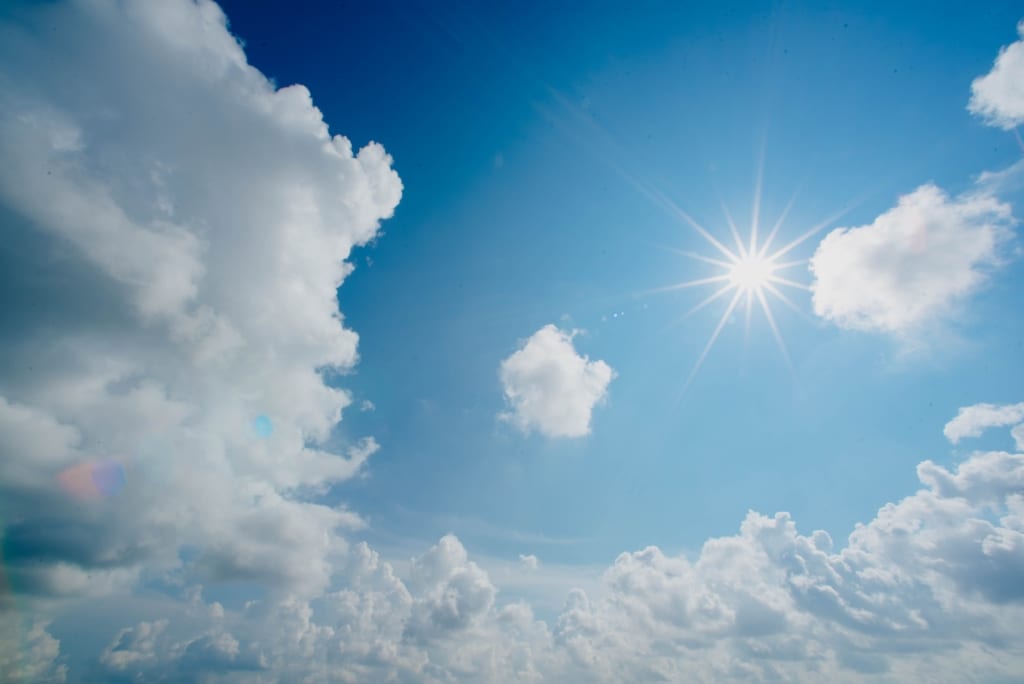
Along with taking steps to block nighttime blue lightwaves, an equally important way to maintain a balanced circadian rhythm and promote better health and sleep quality is to avail yourself of regular exposure to daylight, especially within the first two hours of waking for at least 20 minutes (gazing directly at the sun is not necessary nor recommended but eyes should not be shielded by sunglasses, glasses or contact lenses). These bright blue light wavelengths from the sun are very beneficial and provide a type of full spectrum illumination unobtainable with most artificial lighting. Outside light is far more intense in lux units than indoor light. The latter is generally 100-500 lux units in comparison to approximately 100,000 lux units of outside light at midday. Even if it is overcast, the lux of natural sunlight far exceeds artificial light.
Sunlight exposure also stimulates the manufacture of vitamin D, a hormone that boosts immune function, strengthens bones and muscle and helps to prevent cancer, dementia, metabolic and other diseases. Moreover, it increases production of serotonin needed for sufficient secretion of melatonin at night. Higher serotonin levels help keep energy levels up, boost mental focus and attention span, speed reaction times, reduce daytime sleepiness, and improve mood. Even short exposure to sunlight will allow you to sleep more deeply at night due to the greater contrast with darkness that works to signal increased melatonin production (keep in mind that staying inside all during the day can decrease your melatonin at night by half!) Direct exposure to bright natural light also triggers the body to produce a spike in morning cortisol that works in conjunction with melatonin to regulate the sleep-wake cycle.

For times when bright morning sunlight is not available, some health experts recommend using light therapy boxes that emit bright blue wavelengths that mimic the role sunlight plays in stimulating optimal serotonin production and cortisol rhythm. These types of light boxes generally give off 10,000 or more lux light and are often used to treat SAD (Seasonal Affective Disorder), a type of depression that is more prevalent in the winter when daylight hours are shorter. Both natural sunlight and similar brightness from a light therapy box work to promote greater energy, mood and sleep quality.
Concluding Thoughts
While the pivotal introduction of electric light to society occurred nearly 140 years ago, only in recent years are scientists learning the true effects of artificial light at night on the brain and body. If you would like to learn more about this subject along with further information on strategies that can help you minimize night exposure to blue light and subsequent risks to your health and well-being, I would encourage you to check out the internet articles I have listed below.
Blue Light Has a Dark Side – Harvard Medical Publishing
Timing of Light Exposure Affects Mood and Brain Circuits – NCBI – NIH
7 Blue Light Facts: How Blue Light is Both Bad and Good For You – All About Vision.com
The Latest on Blue Light and Sleep – Dr. Michael Breus (“The Sleep Doctor”)
Light at Night Damages Your Health and Potentially Future Generations – Dr. Joseph Mercola
Effects of Blue Light on the Circadian System & Eye Physiology – NCBI – NIH
Are There Benefits to Blue-Blocking Glasses? – Dr. Joseph Mercola
How Blue Light Affects Mental Health – Mental Health America
Photo Credits
Candles: Hindustan Times
Office Lights: https://gardnerfoxcommercial.wordpress.com/2010/06/17/new-office-for-energy-plus/
Laptop: https://iristech.co/color-temperature-and-blue-light/
Clock: https://geneticliteracyproject.org/2017/10/03/circadian-clock-research-wins-nobel-prize-may-help-us-sleep-travel-mars/
Blue Light: https://goodereader.com/blog/electronic-readers/bluelight-can-cause-blindness-which-is-why-people-choose-e-readers
Yellow Glasses: https://www.swanwicksleep.com/products/swannies-custom-prescription-blue-light-blocking-glasses-progressive
Light Therapy: https://www.lighttherapydevice.com/managing-winter-blues-with-sad-lights/



